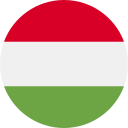Szókincs az IELTS Academichez (Pontszám 6-7) - Geology
Itt megtanulsz néhány angol szót a geológiával kapcsolatban, amelyek szükségesek az akadémikus IELTS vizsgához.
Áttekintés
Villámkártyák
Betűzés
Kvíz

the outermost layer of the Earth, consisting of solid rock and divided into the continental crust and the oceanic crust

kéreg, Föld kéreg
particles of solid material that settle at the bottom of a liquid

üledék, lerakódás
the process by which soil and rock are gradually destroyed and removed by natural forces such as wind, water, and ice

erózió, kopás
the scientific study of minerals, their composition, properties, and classification, often involving the analysis of crystal structures and the identification of various mineral species

ásványtan, ásványok tanulmányozása
the branch of geology that focuses on the study of rocks, their classification, composition, origin, and the processes involved in their formation

petrológia, kőzetek tanulmányozása
the scientific study of landforms, their origin, development, and classification, often examining the processes that shape the Earth's surface, such as erosion, deposition, and tectonic activity

geomorfológia, a felszínformák tudományos vizsgálata
a tapering, icicle-like mineral formation hanging from the roof of a cave or underground structure, typically composed of calcium carbonate deposited by dripping water containing dissolved minerals

stalaktit, lógó ásványképződmény
a cone-shaped mineral formation rising from the floor of a cave or underground structure, formed by the deposition of minerals from dripping water containing dissolved substances

stalagmit, kúp alakú ásványképződmény
a vast and longest subdivision of geological time

eon, földtörténeti korszak
a supercontinent that existed during the late Paleozoic and early Mesozoic eras, comprising most of Earth's landmasses fused together before breaking apart into the continents we recognize today

Pangea, Pangaea
an ancient supercontinent that included South America, Africa, Antarctica, Australia, the Indian subcontinent, and the Arabian Peninsula

Gondwana, Gondwana szuperkontinens
a hypothetical ancient supercontinent that existed from the late Precambrian to the Jurassic period, comprising the landmasses of present-day North America, Europe, Asia, and parts of Antarctica, before it began to break apart

Laurázsia egy feltételezett ősi szuperkontinens volt, amely a késő prekambriumtól a jura időszakig létezett
the total amount of water on Earth, including oceans, seas, lakes, rivers, groundwater, and atmospheric water vapor

hidroszféra, vízköpeny
a principle in geology stating that in a sequence of undisturbed sedimentary rock layers, the youngest rocks are at the top, and the oldest rocks are at the bottom, helping determine the relative ages of geological formations

szuperpozíció, szuperpozíció elve
a visible exposure of rock or geological strata at the Earth's surface, often occurring on hillsides, cliffs, or other elevated areas, providing insight into the underlying geological structure

kőzetfelszín, földtani rétegek felszíne
solid rock beneath surface materials, forming the Earth's crust foundation

alapkőzet, sziklás alap
the region of the Earth's interior, lying beneath the crust and extending to the outer core, composed of solid rock that can deform and flow over geological time scales

köpeny, a Föld köpenye


